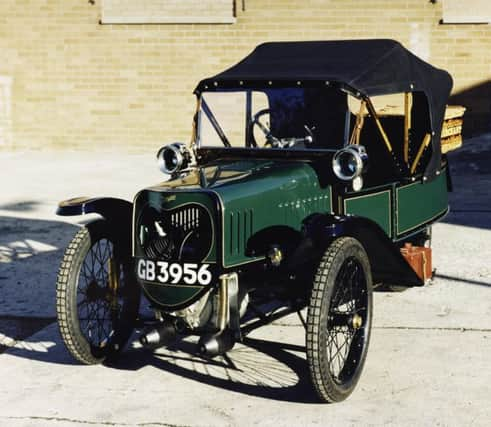When a Hebridean island got its first motor car


It was the first ever private motor car on the island and it caused quite a stir after arriving on the deck of a trawler.
The car belonged to Finlay Paterson, a merchant and JP, who bought the car, a standard Runabout model, in January 1933.
Advertisement
Hide AdAdvertisement
Hide AdIt became a popular sight around the islands and at least one bride arrived at church in the Morgan on her wedding day.
The car is now a key exhibit at the Lews Castle museum in Stornoway, which was officially launched by First Minister Nicola Sturgeon this week.
The Morgan has returned home to the Hebrides after it was restored by an Edinburgh policeman and donated to the National Museums Scotland.
Records show the Morgan was first registered in Glasgow in 1923 and bought in Inverness two years later.
Advertisement
Hide AdAdvertisement
Hide AdThe first stamp in the log book shows the original owner to be James Donald Scoular, Tigh-na-Hiaradh, Lochmaddy, on North Uist.
In 1931, it was sold to James Donald Scoular of Stornoway who then sold the car onto Mr Paterson.
The car was kept in a wooden shed in Berneray by Mr Paterson’s daughter Bessie following the death of her father, who was also a JP and a ferryman who brought the first motorised boat to his island.
In 1988, a restoration of the Morgan got underway after an Edinburgh police man, Lawrie Sutherland, heard about the car from a fellow officer.
Advertisement
Hide AdAdvertisement
Hide AdHe travelled north, depite a warning from Bessie it would be a waste of time heading north as the shed had blown away.
Mr Sutherland said in an earlier interview: “When the previous owner died, the open two-seater was pushed into a wooden garage virtually on the edge of the Atlantic and left.
“The ravages of time took their toll, the garage collapsed and the car lay buried and open to all the elements for years.”
It took Mr Sutherland and a colleague about two hours to dig the car free.
Advertisement
Hide AdAdvertisement
Hide AdMr Sutherland said in an interview in 1990: “She certainly wasn’t kidding about the state of the car. But after giving it a thorough going over I told her that if I could restore the car to its original condition, I would bring it back one day for her to see. She said that if I did just that I could keep it. It would be mine.”
Documents which were handed to Mr Sutherland show the Morgan cost £128 new with acetylene lights (£139 if fitted with electric lights), and the road fund licence was £4.
Insurance papers from 1932 show the car was insured for travel only on the Outer Hebrides at £3-7-6.
Mr Sutherland donated the car to National Museum of Scotland in March 2000.
Advertisement
Hide AdAdvertisement
Hide AdMoving the car to the Lews Castle Museum was one of the trickiest tasks for museum staff.
The museum looks at the long human occupation of the Outer Hebrides with people’s relationships with the land, sea, work and community key themes to the curated space.
Through a partnership with the British Museum, six of the world famous Lewis Chessmen take their place as a centrepiece within the main gallery.
The playing pieces, carved from walrus tusk and whalebone some 800 years ago, were discovered on Uig beach on the west coast of Lewis in 1830.
Over one third of the objects on display have been loaned by National Museums Scotland with including a spectacular Viking hack-silver coin hoard also among exhibits.
